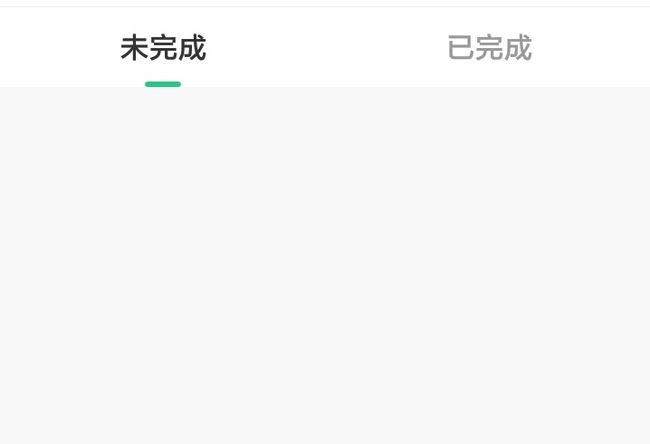借鉴TabLayout自带的指示器的移动逻辑,一个可以设定指示器长度的指示器
TabLayout继承自HorizontalScrollView,他有一个直接的子view,是一个LinearLayout(TabLayout的内部类SlidingTabStrip)。加入tab的操作是直接添加TabView(或者是自定义的布局)为LinearLayout的子view。如果是scrollable的模式的时候,每次选中tab之后,预期是将此tab移动到中间,然后滚动TabLayout;如果是fixed模式,不需要滚动TabLayout。接下来获取tab的当前的左右位置就可以绘制指示器了。
我的想法是,利用TabLayout的自带的指示器的移动逻辑,只需改变长度就可以了。在自定义的IndicatorView中,添加TabLaoyut切换监听,切换的时候计算tab的实际滚动距离,然后获取tab的左右位置,根据指示器的长度计算指示器的left,绘制指示器就可以了。
具体实现:
class IndicatorView(context: Context?, attrs: AttributeSet?, defStyleAttr: Int) : View(context, attrs, defStyleAttr) {
constructor(context: Context?, attrs: AttributeSet?) : this(context, attrs, 0)
constructor(context: Context?) : this(context, null)
private var bindTabLayout: TabLayout? = null
var indicatorWidth = 0f
var indicatorheight = -1f
private var indicatorLeft = 0f
private var lastIndicatorLeft = -1f
private val paint = Paint(Paint.ANTI_ALIAS_FLAG)
private val rectF = RectF()
private var lastSelectedPosition = 0
private val animator = ValueAnimator.ofFloat()
fun setIndicatorColor(color: Int) {
paint.color = color
}
fun setupWithTabLayout(tabLayout: TabLayout) {
bindTabLayout = tabLayout
tabLayout.addOnTabSelectedListener(object : TabLayout.OnTabSelectedListener {
override fun onTabReselected(tab: TabLayout.Tab?) {
}
override fun onTabUnselected(tab: TabLayout.Tab?) {
lastSelectedPosition = tab!!.position
}
override fun onTabSelected(tab: TabLayout.Tab?) {
calculate()
}
})
tabLayout.setOnTouchListener { v, event ->
if (event.actionMasked == MotionEvent.ACTION_UP){
UIHandler.postDelayed({
calculateScroll()
},300)
}
return@setOnTouchListener false
}
tabLayout.post {
calculate()
}
}
// 计算指示器的目标位置
private fun calculate(){
val selectedTabPosition = bindTabLayout?.selectedTabPosition ?: -1
if (selectedTabPosition >= 0) {
// mTabStrip是TabLayout的子view,他是TabView的直接父View,
val mTabStrip = bindTabLayout?.getChildAt(0)
if (mTabStrip is ViewGroup?) {
mTabStrip?.let {
// 计算tab要滚动多少
var targetScrollX = calculateScrollXForTab(selectedTabPosition,0f)
// tab的父view的长度
val tabStripWidth = it.measuredWidth
// 计算滚动的实际距离,滚动不能越界
if (targetScrollX + bindTabLayout!!.measuredWidth > tabStripWidth){
// 滚动到最右边,滚动最大值就是 tab的父view的长度 - tabLayout的长度
targetScrollX = tabStripWidth - bindTabLayout!!.measuredWidth
}else if (targetScrollX < 0){
// 滚动到最左边,滚动最小值为0,不能为负数
targetScrollX = 0
}
val tabView = mTabStrip.getChildAt(selectedTabPosition)
tabView?.let {
indicatorLeft = it.left + (it.measuredWidth - indicatorWidth) / 2 - (targetScrollX )
if (lastIndicatorLeft == -1f){
lastIndicatorLeft = indicatorLeft
postInvalidate()
}else{
animator()
}
}
}
}
}
}
private fun calculateScroll(){
val selectedTabPosition = bindTabLayout?.selectedTabPosition ?: -1
if (selectedTabPosition >= 0) {
// mTabStrip是TabLayout的子view,他是TabView的直接父View,
val mTabStrip = bindTabLayout?.getChildAt(0)
val currentScrollX = bindTabLayout?.scrollX?:0
if (mTabStrip is ViewGroup?) {
mTabStrip?.let {
val tabView = mTabStrip.getChildAt(selectedTabPosition)
tabView?.let {
indicatorLeft = it.left - currentScrollX + (it.measuredWidth - indicatorWidth) / 2
animator()
}
}
}
}
}
override fun onLayout(changed: Boolean, left: Int, top: Int, right: Int, bottom: Int) {
super.onLayout(changed, left, top, right, bottom)
if (indicatorheight == -1f) indicatorheight = measuredHeight.toFloat()
}
override fun onDraw(canvas: Canvas?) {
super.onDraw(canvas)
rectF.set(indicatorLeft, measuredHeight - indicatorheight, indicatorLeft + indicatorWidth, measuredHeight.toFloat())
canvas?.drawRoundRect(rectF, indicatorheight / 2, indicatorheight / 2, paint)
}
private fun animator() {
if (animator.isRunning){
animator.cancel()
}
animator.setFloatValues(lastIndicatorLeft, indicatorLeft)
animator.duration = 300L
animator.addUpdateListener { animation ->
indicatorLeft = animation?.animatedValue as Float
lastIndicatorLeft = indicatorLeft
postInvalidate()
}
animator.start()
}
/**
* 计算TabLayout要滚动多少,预期值,不是实际距离。
* 此方法是从TabLayout类中复制过来的。选中指定position的tab,预期是,把此tab移动到中间位置
* 此方法就是计算这个预期值的
*/
private fun calculateScrollXForTab(position: Int, positionOffset: Float): Int {
if (bindTabLayout?.tabMode == TabLayout.MODE_SCROLLABLE) {
bindTabLayout?.let {
val mTabStrip = it.getChildAt(0) as ViewGroup
val selectedChild = mTabStrip.getChildAt(position)
val nextChild = if (position + 1 < mTabStrip.getChildCount())
mTabStrip.getChildAt(position + 1)
else
null
val selectedWidth = selectedChild?.width ?:0
val nextWidth = nextChild?.width ?:0
// base scroll amount: places center of tab in center of parent
val scrollBase = selectedChild!!.getLeft() + selectedWidth / 2 - it.width / 2
// offset amount: fraction of the distance between centers of tabs
val scrollOffset = ((selectedWidth + nextWidth).toFloat() * 0.5f * positionOffset).toInt()
return if (ViewCompat.getLayoutDirection(this) == ViewCompat.LAYOUT_DIRECTION_LTR)
scrollBase + scrollOffset
else
scrollBase - scrollOffset
}
}
return 0
}
}
使用
在布局中
在activity或者fragment中
// 指示器宽度
indicatorView.indicatorWidth = Utils.dp2px(this, 20f)
// 指示器颜色
indicatorView.setIndicatorColor(resources.getColor(R.color.green))
// 指示器绑定TabLayout
indicatorView.setupWithTabLayout(tabLayout_lesson_analysis)
